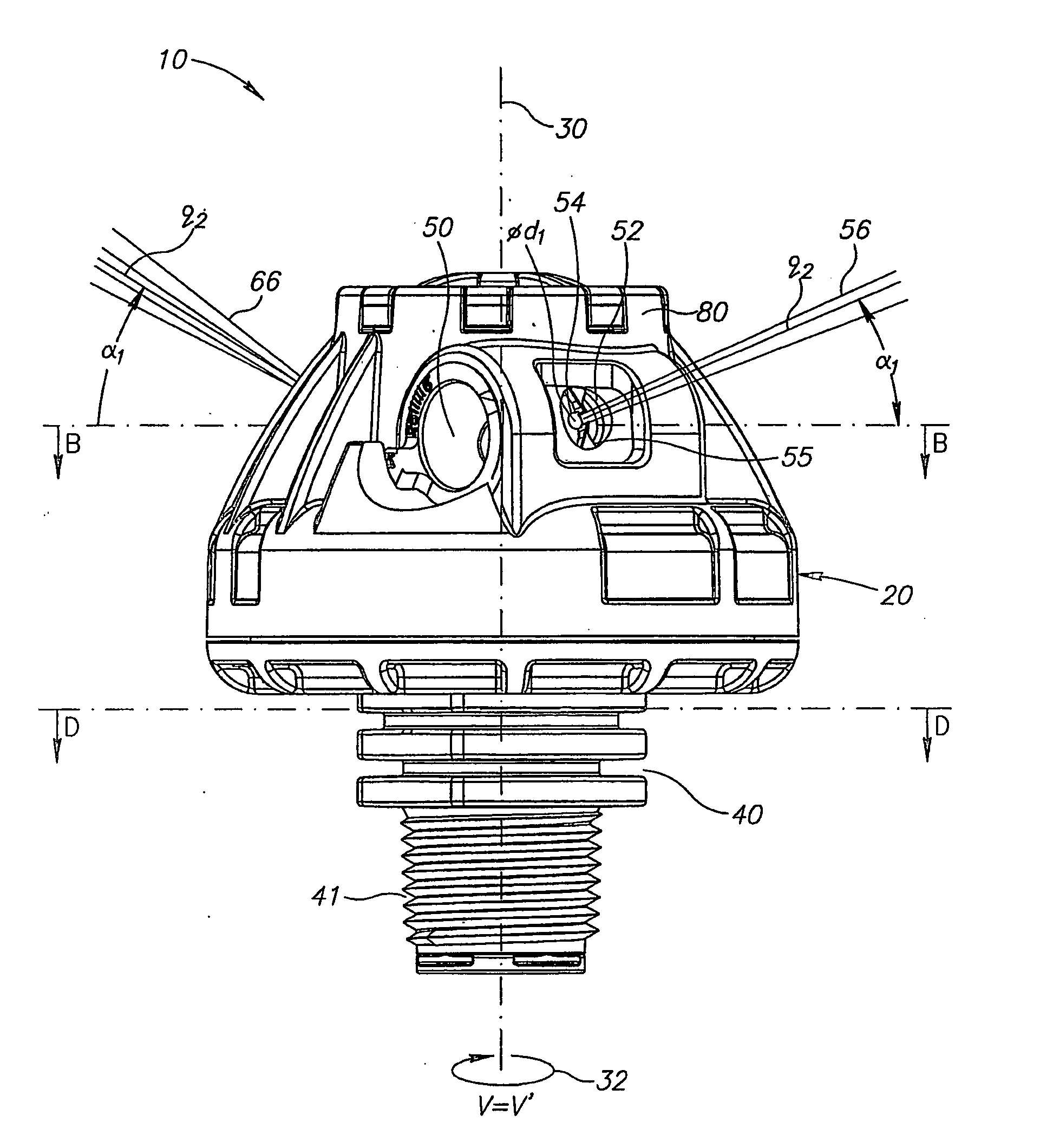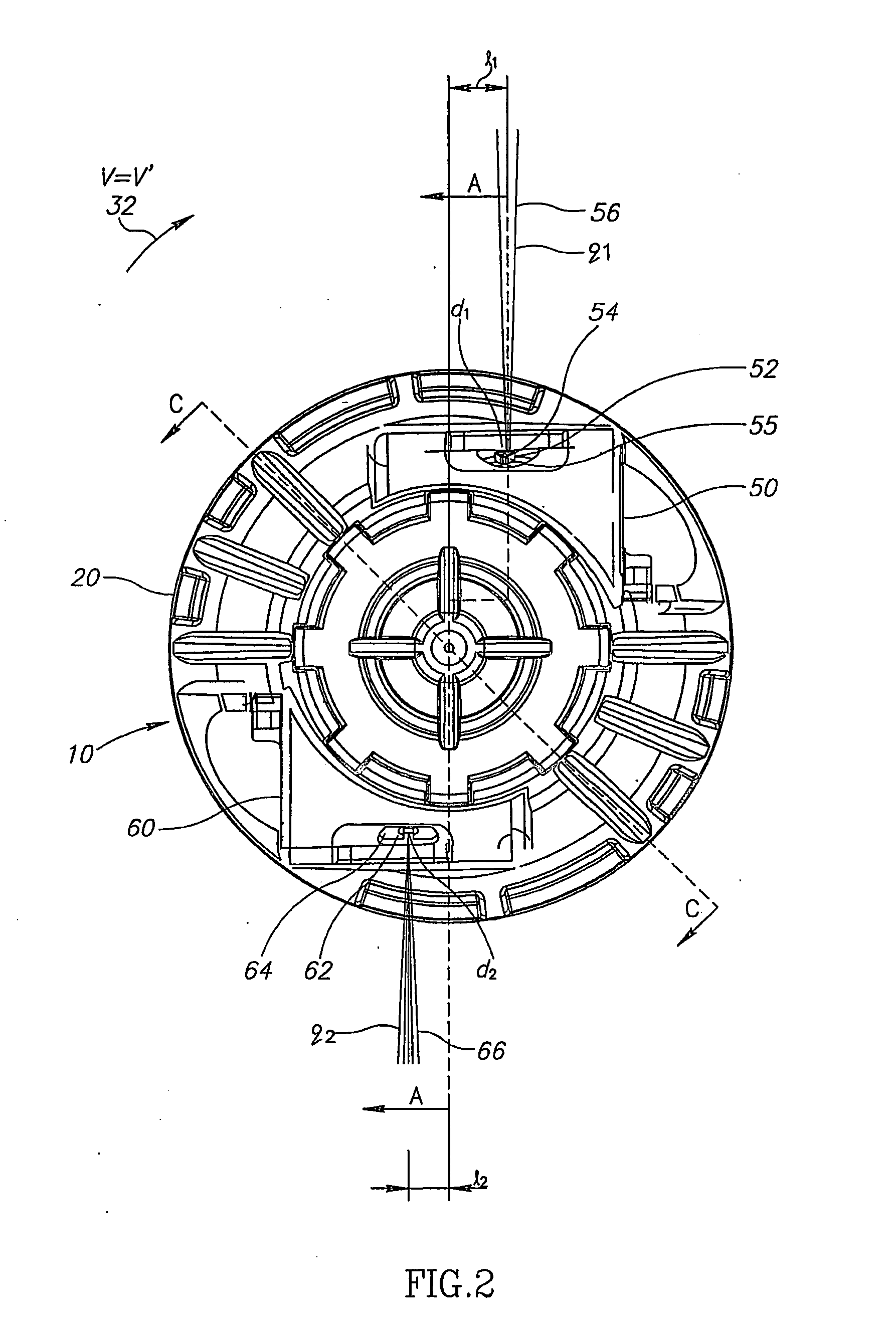Revolving sprinkler
a sprinkler and rotating technology, applied in the direction of moving spraying apparatus, spraying apparatus, fire rescue, etc., can solve the problems of enhanced abrasion and wear, relatively expensive transmission, and natural sensitivity of wheels
- Summary
- Abstract
- Description
- Claims
- Application Information
AI Technical Summary
Benefits of technology
Problems solved by technology
Method used
Image
Examples
Embodiment Construction
[0057] Note: In order to enhance clarity components that keep appearing in several drawings, are assigned identical part numbers.
[0058] Let's refer to drawings number 1 and 2. The drawings depict a side view and a top view, respectively, of a revolving sprinkler 10 in accordance with the preferred embodiment of this invention.
[0059] Sprinkler 10 comprises a turret assembly 20 that is rotateable around a fixed axis 30. The rotateable turret assembly 20 is coupled via base assembly 40—that constitutes the body of the sprinkler, with the flow of the water under pressure (the manner of this coupling will be explained when describing drawings 4 to 6).
[0060] An option for mounting the sprinkler 10 on a means for conveying the water flow under pressure, is for example, mounting the sprinkler 10 on a peg that is linked to an irrigating pipe (peg and pipe are not illustrated). Employing for that purpose external threading 41 that is formed on base assembly 40 and constitutes an integral p...
PUM
 Login to View More
Login to View More Abstract
Description
Claims
Application Information
 Login to View More
Login to View More - R&D
- Intellectual Property
- Life Sciences
- Materials
- Tech Scout
- Unparalleled Data Quality
- Higher Quality Content
- 60% Fewer Hallucinations
Browse by: Latest US Patents, China's latest patents, Technical Efficacy Thesaurus, Application Domain, Technology Topic, Popular Technical Reports.
© 2025 PatSnap. All rights reserved.Legal|Privacy policy|Modern Slavery Act Transparency Statement|Sitemap|About US| Contact US: help@patsnap.com



